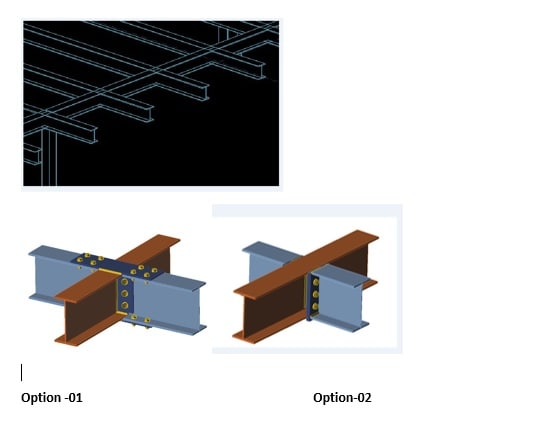I have a 1.5m overhang with concrete and decking sheet. Main beams and secondary are on same level so moment connection needs to made between the main and secondary beam (Cantilever Structure.jpg). I have two options for connection.
1. Fin plate in between and flat plate on top and bottom (Con type-1.jpg)
2. End plates on both sides (Con type-2.jpg)
Is the behavior of type 2 connection same as type 1 ??
I am using IDEASTATICA for analysis of connection and both are working.

1. Fin plate in between and flat plate on top and bottom (Con type-1.jpg)
2. End plates on both sides (Con type-2.jpg)
Is the behavior of type 2 connection same as type 1 ??
I am using IDEASTATICA for analysis of connection and both are working.

